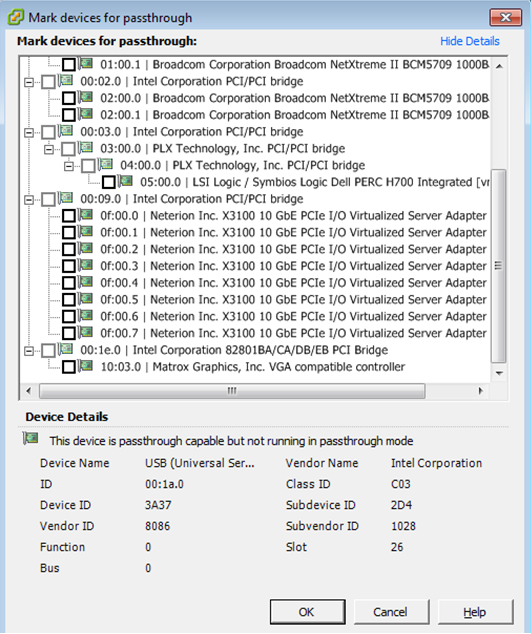As posted previously http://downloadmirror.intel.com/20927/eng/e1000.htm talks about the e1000 driver. It is a linux version but doubt that would change what a driver does.
If you look at the sr-iov section it describes how sr-iov works and what drivers it needs to work - ill quote the part that makes me believe that is the correct driver.
Although this isn't the igb driver showing the version, the igbvf driver is showing Version 1.1.4. That is why I wanted to update the driver. Hope this clears some things up =]
If you look at the sr-iov section it describes how sr-iov works and what drivers it needs to work - ill quote the part that makes me believe that is the correct driver.
The igbvf driver supports 82576-based virtual function devices that can only be activated on kernels that support SR-IOV. SR-IOV requires the correct platform and OS support.
The igbvf driver requires the igb driver, version 2.0 or later. The igbvf driver supports virtual functions generated by the igb driver with a max_vfs value of 1 or greater. For more information on the max_vfs parameter refer to the section on the the igb driver.
The guest OS loading the igbvf driver must support MSI-X interrupts.
Although this isn't the igb driver showing the version, the igbvf driver is showing Version 1.1.4. That is why I wanted to update the driver. Hope this clears some things up =]

